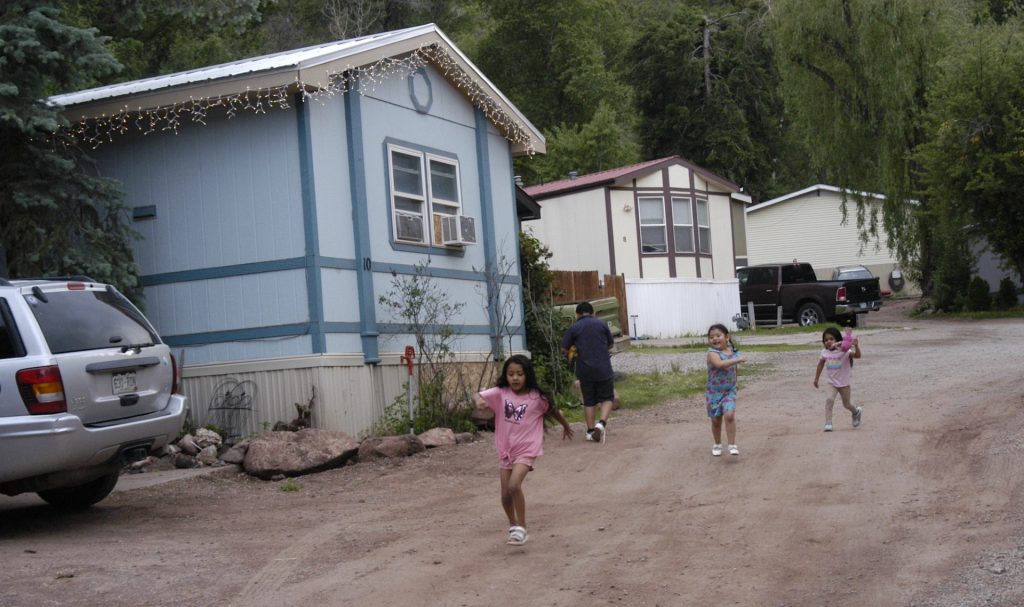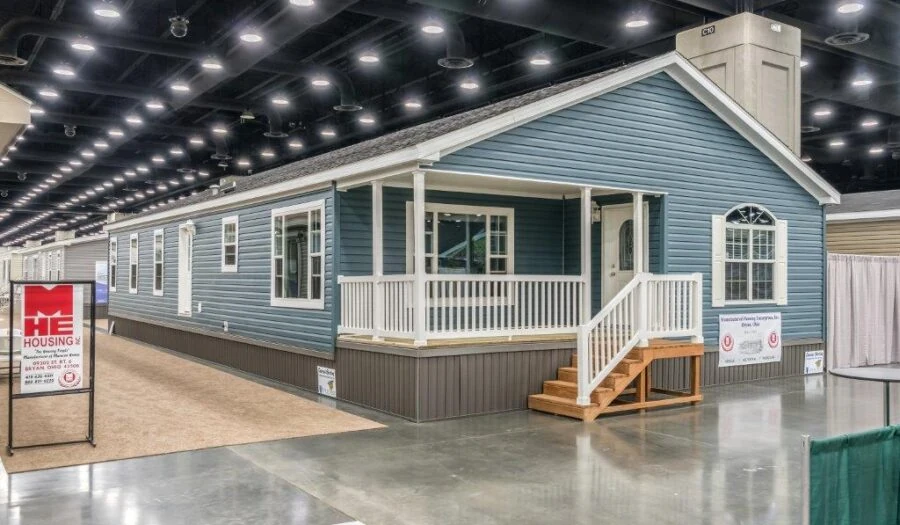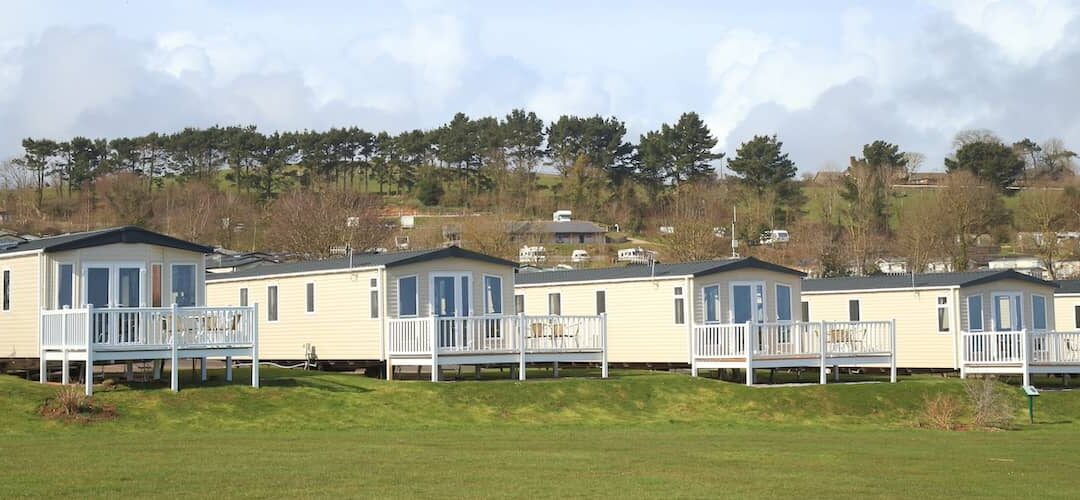When I first started looking into real estate investments I kept hearing about trailer homes as a budget-friendly way to get into the market. With housing prices soaring and traditional homes feeling out of reach for many people it’s no wonder trailer homes are attracting attention. They offer a unique blend of affordability and flexibility that’s hard to ignore.
But are trailer homes really a smart investment or just a temporary fix? I’ve wondered if they can truly build long-term value or if the risks outweigh the rewards. Before making any big decisions I knew I needed to dig deeper into what makes trailer homes appealing—and what potential pitfalls might be hiding beneath the surface.
Understanding Trailer Homes as Investments
Trailer homes sit at the lower end of the real estate spectrum, with prices often ranging from $10,000 to $70,000 for new units according to the Manufactured Housing Institute. Their affordability makes them accessible for first-time investors or anyone targeting lower initial capital outlay.
Many trailer parks offer rental opportunities for the land beneath the home. This arrangement differs from traditional real estate, where land value typically appreciates over time and underpins investment returns. Manufactured homes usually depreciate if not tied to owned land, which can affect equity growth.
I look at trailer homes for potential rental income, lower ongoing expenses, and quicker turnaround times for both renting and selling. Maintenance costs generally run lower than those for single-family houses. Some communities limit the age or type of units, so local regulations and park policies directly impact investment value.
Comparing short-term and long-term returns, trailers deliver higher cash-on-cash yields but less appreciation. For instance, the average yield may reach 8% to 12% annually, based on industry sources like LendingTree, while value gains rarely match stick-built properties.
| Investment Aspect | Trailer Homes | Single-Family Homes |
|---|---|---|
| Initial Cost (avg) | $10,000 – $70,000 | $300,000+ |
| Annual Cash Yield | 8% – 12% | 3% – 7% |
| Typical Appreciation | Low/Depreciation | Moderate/High Appreciation |
| Maintenance Expense | $500 – $2,000 | $2,000 – $5,000 |
| Land Ownership | Rare (often rented) | Common |
| Regulatory Restrictions | Park/City/State Limits | City/State/HOA Restrictions |
Park location, tenant demand, and home age influence profitability. For example, manufactured homes near high-employment areas or transportation hubs maintain stronger occupancy rates.
Asset liquidity for manufactured homes sits between that of vehicles and traditional homes, meaning quick sales happen with competitive pricing but large appreciation remains rare.
Pros of Investing in Trailer Homes

Pros-of-Investing-in-Trailer-Homes
Trailer homes offer specific investment benefits that attract me as an investor seeking accessible, resilient real estate opportunities. Below I explore the top advantages that drive many to consider trailer homes for portfolio diversification and income generation.
Affordable Entry Costs
Lower purchase prices define trailer homes. I can often acquire new units for $10,000 to $70,000, which is significantly less than entry-level site-built homes. This affordable entry means I allocate less capital up front, reducing risk while increasing my ability to purchase multiple units or diversify across properties.
| Property Type | Typical Entry Cost (USD) | Minimum Down Payment (%) |
|---|---|---|
| Trailer Home | $10,000–$70,000 | 5–10 |
| Single-Family Home | $250,000–$400,000 | 10–20 |
| Condo | $180,000–$300,000 | 10–20 |
Potential for Rental Income
Strong demand for affordable rentals boosts occupancy rates in trailer home communities. I see average cash-on-cash yields between 8% and 12% annually, which outpaces many traditional single-family rentals (typically 3% to 7%). Rental homes in well-located parks near major employers attract tenants swiftly and maintain consistent rental streams. Larger parks with amenities like security, playgrounds, or clubhouses often experience even higher tenant retention.
| Investment Type | Cash-on-Cash Yield (%) | Average Vacancy Rate (%) |
|---|---|---|
| Trailer Home Rentals | 8–12 | 3–7 |
| Single-Family Rentals | 3–7 | 5–10 |
| Apartment Rentals | 5–8 | 4–8 |
Lower Maintenance Expenses
Compact designs reduce ongoing expenses for trailer homes. My typical maintenance and repair costs remain lower than with traditional homes due to simpler structures and standardized systems. Replacing common components or addressing damage often costs less both in labor and materials, making repairs faster and more predictable. This reduction in costs enhances net returns and steady cash flow.
| Property Type | Average Annual Maintenance (% of value) |
|---|---|
| Trailer Home | 1–2 |
| Site-Built Home | 2–4 |
These combined benefits—affordable price, rental stability, and low upkeep—give me a practical, data-backed foundation for trailer home investment strategies.
Cons of Investing in Trailer Homes
Investing in trailer homes brings several potential downsides that directly affect returns and stability. Despite the appeal of low entry prices and high cash yields, these risks impact investment performance over time.
Depreciation Concerns
Depreciation remains a core issue for trailer home investments. Unlike traditional real estate, trailer homes typically lose value after purchase. I’m seeing depreciation rates for single-wide mobile homes reach 3% to 5% annually, similar to vehicles rather than real estate assets. Even after upgrades, final sale prices often fail to recover both original investments and improvement costs. Table 1 shows key differences in value appreciation.
| Asset Type | Typical Annual Value Change | Example (10 Years) |
|---|---|---|
| Single-Family Home | +2% to +4% appreciation | $100,000 → $121,899 |
| Single-Wide Trailer Home | –3% to –5% depreciation | $30,000 → $21,750 |
(Data modeled on FHA and NADA Guides statistics)
Financing and Insurance Challenges
Financing a trailer home offers limited choices compared to financing site-built houses. Lenders usually classify mobile homes as personal property, not real estate, bringing higher interest rates and shorter loan terms. I often see loans for mobile homes at rates from 6% to 12% (versus 4% to 7% for conventional mortgages), or lenders demanding large down payments. Insurance for mobile homes comes at a premium due to structural risks, with annual premiums commonly 15% to 30% higher than comparable site-built homes. These costs cut into net returns.
| Factor | Mobile Home | Site-Built Home |
|---|---|---|
| Average Loan Interest | 6% to 12% | 4% to 7% |
| Typical Loan Term | 10–20 years | 30 years |
| Insurance Premium | 15%–30% higher | Standard |
(Based on data from Freddie Mac, National Association of Insurance Commissioners, NADA Guides)
Community Restrictions and Fees
Community rules and park fees limit the profitability of trailer homes. Most mobile homes sit on leased lots with recurring lot rent, which can range from $300 to $800 monthly in the US. These rents rarely offer caps and can rise annually, sometimes exceeding inflation rates. If a park changes ownership or shuts down, I’m at risk of forced relocation, which is expensive and reduces value. Many parks enforce strict regulations, pet restrictions, and lease renewal uncertainties, discouraging potential tenants and limiting future appreciation.
| Fee/Restriction | Typical Range or Occurrence |
|---|---|
| Monthly Lot Rent | $300–$800 |
| Lot Rent Inflation | 2%–7% per year |
| Lease Renewal Uncertainty | Yes |
| Relocation Cost | $3,000–$10,000 per move |
Key Factors to Consider Before Investing

Key-Factors-to-Consider-Before-Investing
Several variables influence whether trailer homes offer strong investment potential. I focus my research on location demand, home quality, and strategies for maximizing long-term returns.
Location and Market Demand
Location impacts rental income stability and long-term occupancy rates. Areas with robust job markets and growing populations—such as Sun Belt states or metros like Dallas and Phoenix—show higher demand and lower vacancy rates for trailer homes. Limited affordable housing options in these regions push more tenants toward mobile homes. Zoning restrictions and city ordinances may also restrict manufactured homes in some localities, reducing potential markets.
| Metro Area | Vacancy Rate (%) | Population Growth (%) | Zoning Restrictions |
|---|---|---|---|
| Dallas, TX | 4.8 | 1.3 | Moderate |
| Phoenix, AZ | 5.2 | 1.6 | Low |
| Cleveland, OH | 9.1 | 0.2 | High |
Type of Trailer Home and Condition
Trailer home type and age determine maintenance costs and rentability. I target homes built after 1976, as HUD standards made these units more energy-efficient, durable, and insurable. Older models often fail safety and efficiency standards, leading to higher turnover and expenses. Condition—including roofs, foundations, and utility systems—directly correlates with tenant satisfaction and rental pricing.
| Home Age | Expected Lifespan (Years) | Maintenance Cost (Annual) | Energy Efficiency |
|---|---|---|---|
| Pre-1976 | 15–25 | $2,500+ | Low |
| Post-1976 | 30–50 | $1,200–$1,800 | Moderate–High |
Long-Term Value and Exit Strategies
Long-term value and exit potential for trailer homes differ from traditional homes. Most manufactured homes depreciate at 3%–5% annually, so rental income becomes the main profit source. Owning the land beneath the home increases value and provides security against park closures or rent hikes. I evaluate community amenities and tenant demographics for parks, since investing in entire parks rather than single units offers greater scale and reduced vacancy risk.
| Investment Type | Typical Yearly Depreciation (%) | Yield Potential (Annual) | Land Ownership Impact |
|---|---|---|---|
| Individual Home (No Land) | 3–5 | 8–12 | Low |
| Individual Home (With Land) | 1–3 | 8–14 | Moderate |
| Entire Mobile Home Park | 0.5–2 | 10–15 | High |
Comparing Trailer Homes to Other Real Estate Investments

Comparing-Trailer-Homes-to-Other-Real-Estate-Investments
Trailer homes offer an affordable entry compared to traditional real estate. I find that purchase prices often start at $10,000 for older units and rarely exceed $70,000 for new homes, while entry-level site-built homes often cost $250,000 or more. Lower initial costs let me minimize my capital outlay and diversify more rapidly.
Cash flow potential stands out for trailer homes. Many investors, including myself, target rental rates of $600 monthly on $30,000 units, producing annual returns around 24%. Site-built homes usually yield 3% to 7% cash-on-cash returns, and require higher upfront investments.
Maintenance expenses are dramatically lower with manufactured homes due to simpler structures and easier-to-source materials. If I’m focused on maximizing yield, these low operating costs compound my profits over time.
Vacancy rates for trailer homes remain stable, mainly because workforce housing demand continues to outpace supply. Workforce renters, such as those in service or manufacturing industries, prioritize affordable housing, making occupancy less volatile compared to luxury rentals or vacation homes, which are more exposed to market downturns.
Financing for manufactured homes presents specific challenges. Many lenders hesitate to offer conventional mortgages for mobile homes, especially when they aren’t attached to land the buyer owns. This restricts leverage, but also reduces competition from highly financed investors.
Park ownership, which means owning the land and leasing to multiple tenants, increases potential returns and provides stability. Parks, especially in high-demand regions, generate solid yields with some locations reporting 70% or higher annualized returns, though that level requires sophisticated management and scale.
The table below summarizes the comparison:
| Aspect | Trailer Homes (Mobile/Manufactured Homes) | Traditional Real Estate (Single-Family Homes) |
|---|---|---|
| Typical Purchase Price | $10,000–$70,000 | $250,000+ |
| Average Annual ROI | ~24% | 3%–7% |
| Maintenance Costs | Lower | Higher |
| Demand Stability | Steadier (workforce housing) | Variable (depends on market) |
| Financing Availability | More difficult | Widely available |
| Market Resilience | More recession-resistant | More sensitive to market cycles |
| Mobility/Flexibility | Relocatable homes | Fixed location |
| Depreciation/Appreciation | Depreciate (unless on owned land) | Usually appreciate |
| Vacancy Risk | Lower (in strong job markets) | Variable, often higher |
When I compare these real estate niches, trailer homes tend to outperform in terms of cash flow and recession resilience, especially as affordable housing shortages increase across the country. However, appreciation is limited unless I control the underlying land, and obtaining financing continues to be a significant barrier. Overall, lower risk and predictable demand make trailer homes a differentiated asset in my investment strategy, particularly in high-employment areas.
Conclusion
After weighing the pros and cons I see trailer homes as a unique investment niche that can deliver solid cash flow and stability—especially in markets where affordable housing is in high demand. They’re not a one-size-fits-all solution but for those willing to navigate the nuances of location tenant demand and park policies the potential rewards are real.
If you’re looking for a way to enter real estate without a massive upfront cost trailer homes offer an accessible path. Just be sure to do your homework on local regulations and always run the numbers before you commit.
Frequently Asked Questions
What makes trailer homes a good entry point for real estate investment?
Trailer homes are affordable, often priced between $10,000 and $70,000, making them accessible for first-time investors. They allow for lower upfront costs, offer quicker rental and sale processes, and generally have lower maintenance expenses compared to traditional homes.
Do trailer homes appreciate in value over time?
Most trailer homes depreciate, typically at a rate of 3% to 5% annually, unless they are permanently attached to owned land. The primary profit comes from rental income rather than property appreciation.
What factors should I consider before investing in a trailer home?
Key factors include the location (proximity to strong job markets), the quality and age of the home (newer than 1976 is preferable), local regulations, and whether you own the land or rent space in a mobile home park.
How does rental income from trailer homes compare to traditional rental properties?
Trailer homes often deliver higher cash-on-cash yields, ranging from 8% to 12% annually, and sometimes higher. In contrast, single-family homes typically yield 3% to 7%. Rental income is also the main profit driver due to limited appreciation.
Are there special financing challenges for trailer homes?
Yes, many lenders do not offer conventional mortgages for trailer homes, especially if they are not attached to owned land. This can make securing financing more difficult compared to site-built homes.
What are the main risks of investing in trailer homes?
Risks include depreciation, potential increases in park rent, the possibility of park closures, and difficulty securing financing. These risks can impact long-term value and profitability.
How does owning the land beneath a trailer home affect investment returns?
Owning the land increases security, protects against park rent hikes, and helps retain value. It can also make financing easier and provide stronger long-term returns compared to renting a lot.
What kind of returns can investors expect from trailer homes?
Investors often see annual returns around 24%, largely due to low purchase prices and steady rental demand. This yield is typically higher than that of traditional real estate investments.
How important is location when investing in trailer homes?
Location is critical. Areas with strong job growth and increasing populations, such as Dallas and Phoenix, have higher demand for trailer homes, leading to lower vacancy rates and stronger rental income potential.
Is investing in multiple trailer homes or owning entire parks better than individual units?
Owning multiple units or entire mobile home parks can reduce vacancy risk, offer greater scale, and improve overall returns. Managing an entire park also provides more control over operating expenses and community amenities.

